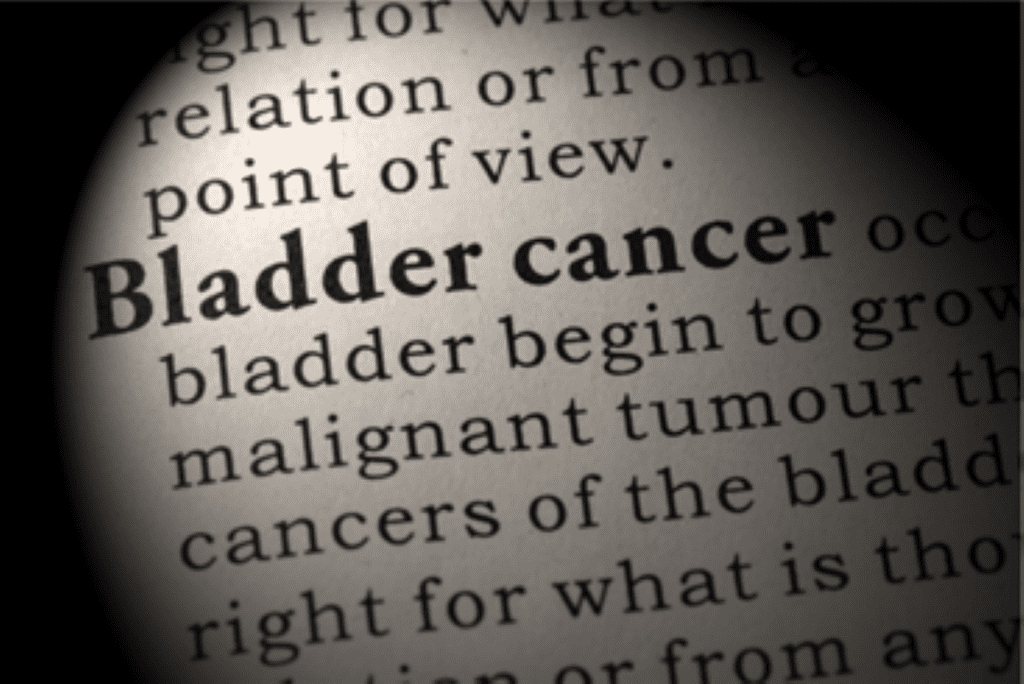Genetics: a cosmic role of the dice that plays a role in so many medical conditions, including bladder cancer. Mutations in FGFR3, PIK3CA, KDM6A, and TP53 are commonly associated with bladder cancer, but no fewer than 27 genes have been implicated, as well as deletions in Chromosome 9.
According to BrownHealth.org, “Since 1950, the rate of bladder cancer has increased by 50 percent in the U.S. […] The disease is the sixth most commonly diagnosed cancer in the United States and has the highest recurrence rate of any form of cancer.”
Bladder cancer risk is increased by two to three times if you are a smoker. In fact, fully half of those diagnosed have a history of long-term smoking. If you smoke: stop!
But beyond smoking, exposure to certain chemicals used in dye, paint, pesticides, herbicides (including agent orange), textiles, rubber, and diesel fuel exhaust are also linked to bladder cancer. A particular type of chemotherapy—cyclophosphamide—has been linked to bladder cancer. And those with type-2 diabetes and who take Actos (pioglitazon) have shown an increased risk of bladder cancer greater than 60%.
Those with chronic urinary tract infections, kidney stones, or any other repeated irritation of the bladder (such as long-term use of urinary catheters) are also at an increased risk. The average age for diagnosis is 72-73, but people of any age can develop bladder cancer.
There are often no symptoms to bladder cancer in its early stages, with blood in the urine being one exception. Menstruating women may confuse this with their menses, but never ignore blood in the urine; always get to the bottom of it.
Bladder cancer treatment has been in the news because one of the most often used treatments, especially in early stage bladder cancer, has been in short supply worldwide since 2010, and the shortage is expected to continue for years.
Bacillus Calmette-Guérin (BCG), is often infused into the bladder through a catheter. Merck makes most of the world’s supply, but has not been able to keep up; this has lead to rationing, reduction in dosing, and prioritizing those who have not had therapy as yet. It has also led to a search for alternative treatments.
According to the Carver College of Medicine at the University of Iowa, a treatment developed by Michael O’Donnell, MD, replaces BCG with a combination of two readily available (and inexpensive) chemotherapy drugs—gemcitabine and docetaxel (gem/doce).
A study published in 2022 showed that 82% of patients with high-risk non-muscle invasive bladder cancer who were treated with this combo did well.
According to an article by Iowa Carver College of Medicine:
“With that earlier study we showed that patients with untreated non-muscle invasive bladder cancer who received gem/doce had excellent safety and efficacy outcomes that were on par with historical outcomes of BCG,” says Vignesh Packiam, MD, clinical assistant professor of urology with UI Health Care.
But there has been an explosion of treatments and many clinical trials are underway; there are so many it’s difficult even for urologists to keep up. In a landscape as confusing as this, seeking multiple opinions is imperative. Those interested in an in-depth overview can watch the webinar on demand by The Patient Story entitled “Bladder Cancer Breakthroughs 2025” by Dr. Ashish Kamat from MD Anderson which you can find here.
Bladder cancer is a serious diagnosis, with stage, age, and general health influencing outcomes. It requires vigilance after treatment to watch for recurrence.








